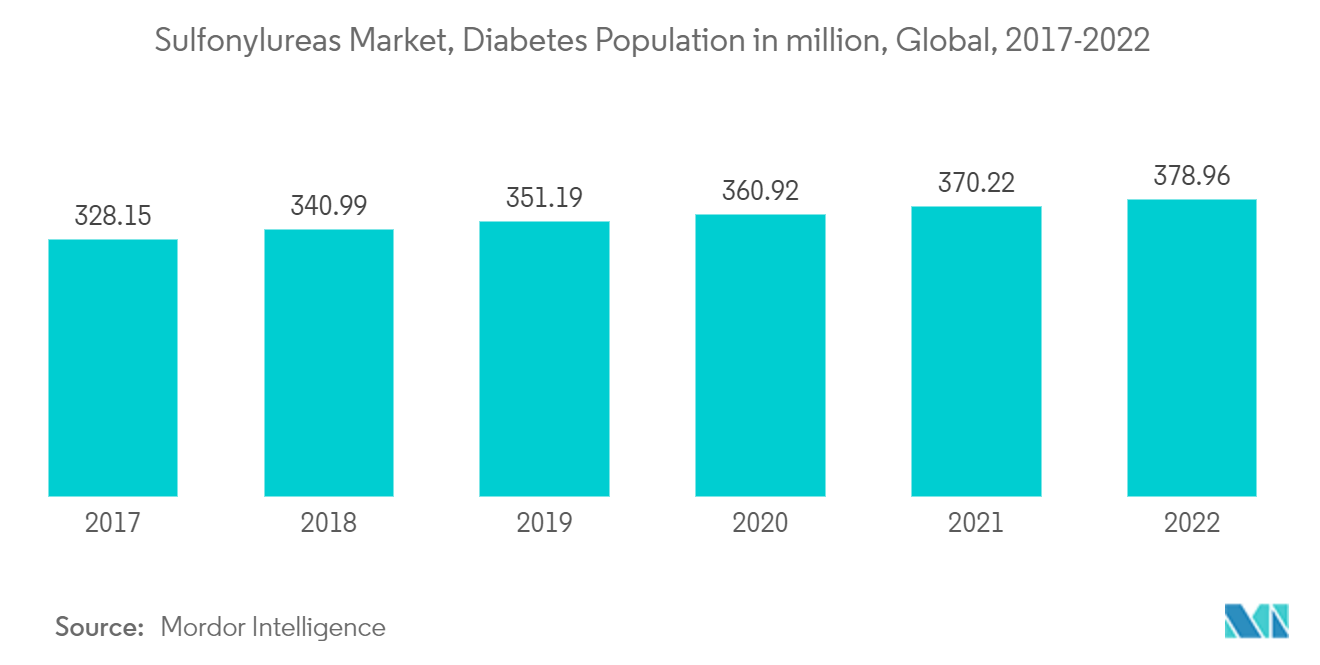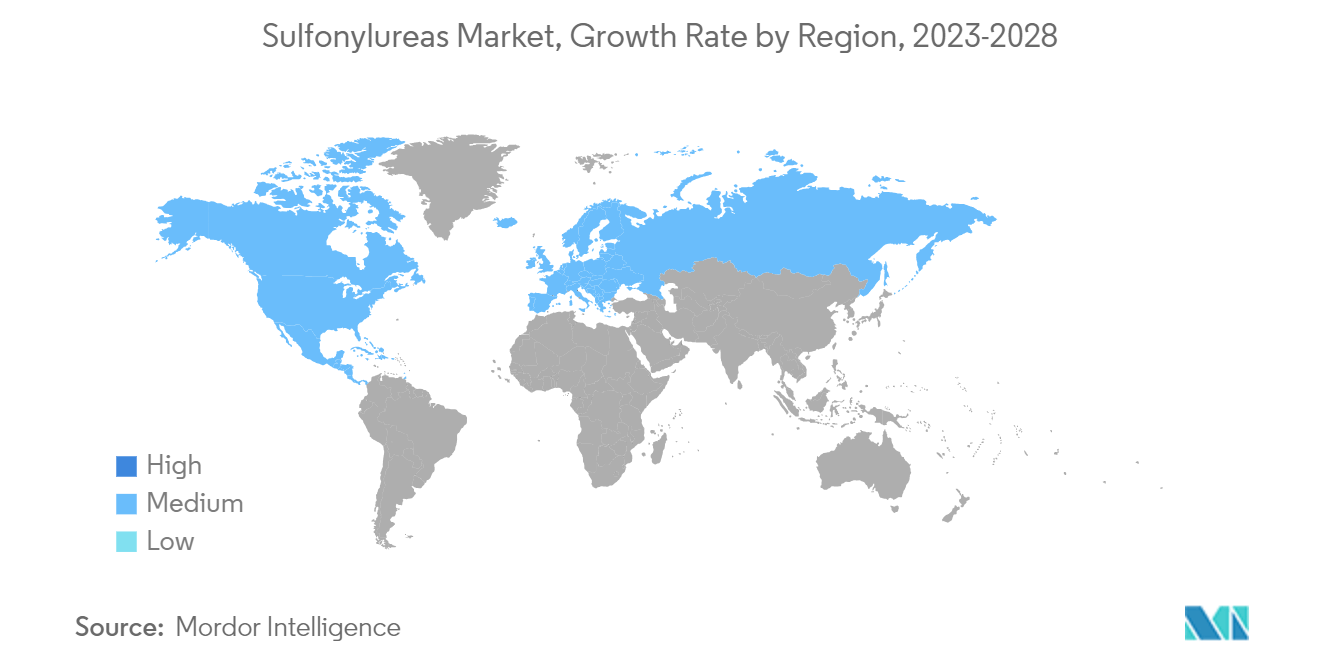Market Trends of Sulfonylureas Industry
Rising diabetes prevalence globally
The Global diabetes population is expected to rise by more than 1.9% over the forecast period.
According to International Diabetes Federation, the adult diabetes population in 2021 was approximately 537 million, which will increase by 643 million in 2030. Obesity is considered one of the major factors contributing to the disease, primarily Type 2 diabetes. Continued elevation in blood glucose levels in diabetes patients can contribute to progressive complications such as renal, nerve, and ocular damage.
Type 2 diabetes is increasingly prevalent and associated with an increased cardiovascular and renal disease risk. Along with lifestyle changes, metformin is usually the first-line pharmacotherapy, and sulfonylureas are added after metformin failure. Sulfonylureas are a group of medicines used to manage Type 2 diabetes. Sulfonylureas lowers blood glucose levels by stimulating insulin release from the Beta cells of the pancreas. Their action depends on the presence of functioning Beta cells. Therefore, sulfonylureas do not work in people with type 1 diabetes.
In April 2021, WHO launched the Global Diabetes Compact, a global initiative aiming for sustained improvements in diabetes prevention and care, focusing on supporting low and middle-income countries. The Compact is bringing together national governments, UN organizations, nongovernmental organizations, private sector entities, academic institutions, philanthropic foundations, people living with diabetes, and international donors to work on a shared vision of reducing the risk of diabetes. It also ensures that all people diagnosed with diabetes can access equitable, comprehensive, affordable, and quality treatment and care.
Therefore, the studied market is anticipated to grow over the analysis period due to increased prevalence and the above factors.

Middle East and Africa region is expected to witness highest CAGR in the Sulfonylureas Market over the forecast period
Over the forecast period, the Middle East and Africa region is expected to register a CAGR of 15%.
73 million adults were living with diabetes in the IDF MENA Region in 2021. This figure is estimated to increase to 95 million by 2030. 48 million adults in the IDF MENA Region are living with Impaired Glucose Tolerance, which increases their risk of developing type 2 diabetes. The Middle East and African region witnessed an alarming increase in the prevalence of diabetes. Recently, the rate of diabetes is at an all-time high, mainly due to lifestyle changes. Diabetes is associated with many health complications. Patients with diabetes require many corrections throughout the day to maintain nominal blood glucose levels. It includes administering additional insulin or ingesting additional carbohydrates by monitoring their blood glucose levels.
The Government is working on plans and policies to control the outcomes of diabetes. For instance, Saudi Government, in July 2022, announced that Saudi Arabia saw a growing demand for quality healthcare services spurred by changes, including an increasing and aging population and a growing prevalence of lifestyle diseases such as diabetes and obesity. The Government and private sector are involved in working on healthcare entities, certifications, and regulations. The Government is taking steps to include 100% of Saudi citizens covered by insurance. It is working towards ensuring affordability, access, and quality digital healthcare and primary care with cost-effectiveness.
Owing to the factors above, the market is expected to grow during the forecast period.


